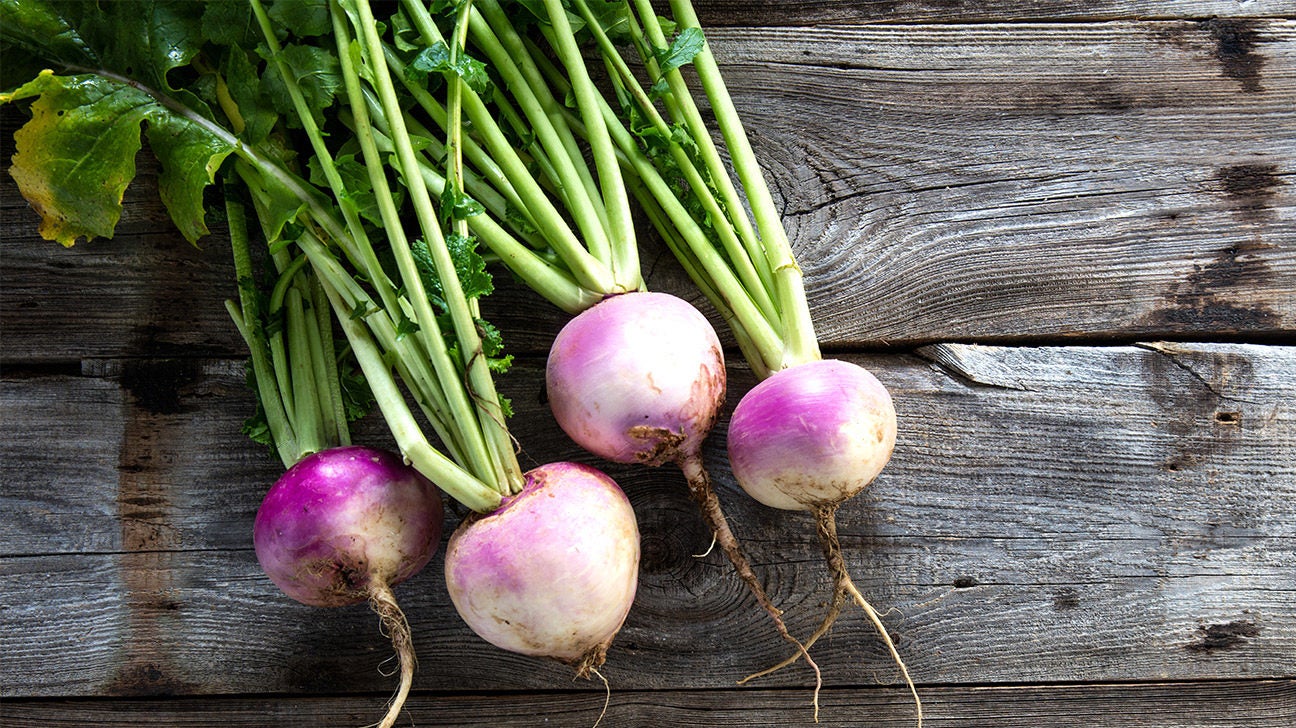Introduction

Root vegetables play a crucial role in many culinary traditions, and two popular options are parsnips and turnips. While they may share some similarities, parsnips and turnips have distinct characteristics that set them apart. In this article, we will explore the differences between parsnips and turnips in terms of their nutritional value, flavor profiles, cooking methods, and culinary uses. Whether you’re looking to add sweetness to your dishes with parsnips or spice things up with turnips, understanding the unique qualities of these root vegetables will help you make the best choice for your recipes and personal preferences. So, let’s dive into the root vegetable rumble: parsnips versus turnips.
Background On Parsnips And Turnips
Both parsnips and turnips are root vegetables that have been cultivated for centuries. Parsnips are believed to have originated in Europe and have been used in cooking since ancient Roman times. They were primarily used as a sweetener before sugar was introduced. Turnips, on the other hand, have a longer history and are thought to have originated in Asia. They were a staple crop in Europe during the Middle Ages and were often used as feed for livestock. Today, both parsnips and turnips are widely cultivated and enjoyed in many different cuisines around the world.
Key Differences Between Parsnips And Turnips
Parsnips and turnips may both be root vegetables, but they have distinct differences in terms of appearance, taste, and culinary uses. Here are some key differences between parsnips and turnips:
- Appearance: Parsnips have a cream-colored skin and a tapered shape, while turnips have a round shape with a white or purple skin.
- Taste: Parsnips have a subtly sweet and nutty flavor, while turnips have a slightly bitter and peppery taste.
- Texture: Parsnips have a firmer and denser texture, making them suitable for roasting or mashing. Turnips have a softer and slightly grainy texture.
- Culinary uses: Parsnips are often used in soups, stews, and roasted dishes, while turnips are commonly used in salads, stir-fries, and as a side dish.
Overall, while both parsnips and turnips are versatile root vegetables, their differences in appearance, taste, and culinary uses offer a range of options for incorporating them into various dishes.
Nutritional Value

Parsnips and turnips both offer significant nutritional value. Parsnips are rich in vitamins and minerals, particularly vitamin C, folate, and potassium. They also contain fiber, which aids digestion. Turnips, on the other hand, are a great source of vitamin A, which is essential for eye health and immune function. They also provide fiber, calcium, and iron. Both root vegetables are low in calories and carbohydrates, making them a healthier alternative to starchy vegetables like potatoes. Incorporating parsnips and turnips into your diet can provide a range of essential nutrients and support overall health.
Parsnips: Health Benefits And Nutritional Content
Parsnips offer a range of health benefits due to their impressive nutritional content. They are a good source of fiber, which aids in digestion and promotes gut health. Parsnips are also rich in vitamin C, which supports immune function and collagen production for healthy skin. Additionally, they contain folate, which is important for cell growth and development. Potassium, another key nutrient in parsnips, helps maintain proper heart and muscle function. Including parsnips in your diet can provide a variety of essential vitamins and minerals for overall health and well-being.
Turnips: Health Benefits And Nutritional Content
Turnips offer various health benefits and are packed with essential nutrients. These root vegetables are a good source of fiber, which aids in digestion and helps maintain a healthy weight. Turnips are also rich in vitamin C, which boosts immune function and collagen production for healthy skin. They contain potassium, a mineral that supports heart and muscle function, as well as manganese, which is important for bone health. Additionally, turnips are low in calories and fat, making them a nutritious addition to a balanced diet. Including turnips in your meals can provide a range of essential vitamins and minerals for overall well-being.
Flavor And Taste

When it comes to flavor and taste, parsnips and turnips offer distinct profiles that cater to different palates. Parsnips have a sweet and nutty taste, reminiscent of carrots. They provide a slightly earthy flavor that complements a variety of dishes, from soups to roasted vegetables. Turnips, on the other hand, have a more robust and tangy flavor, with a hint of bitterness. Their taste can range from mild to pungent, depending on the variety. Turnips are commonly used in both raw and cooked dishes, adding a unique flavor to salads, stews, and stir-fries. Both vegetables bring their own unique taste to the table, allowing for versatile culinary experiences.
Parsnips: Flavor Profile And Culinary Uses
Parsnips have a distinct flavor profile that combines sweetness and earthiness, making them a versatile ingredient in various dishes. They have a nutty undertone and a hint of spice, which adds depth to recipes. Parsnips are commonly used in roasted vegetable medleys, soups, stews, and purees. They can also be mashed, steamed, or baked, and their natural sweetness pairs well with savory ingredients like herbs, spices, and meats. Additionally, parsnips can be used to make delicious fries and chips as a healthier alternative to potatoes. With their unique flavor, parsnips add a delightful touch to any culinary creation.
Turnips: Flavor Profile And Culinary Uses
Turnips have a unique flavor profile that combines a mild, slightly peppery taste with a hint of sweetness. They have a crisp and firm texture when raw, but when cooked, they become tender and develop a subtle sweetness. Turnips are often used in a variety of culinary dishes, including soups, stews, stir-fries, and roasted vegetable medleys. They can also be mashed, pickled, or used as a topping for salads. Turnips add a refreshing and vibrant flavor to recipes and can be a versatile ingredient in many cuisines.
Cooking Methods And Recipes

When it comes to cooking parsnips, there are several popular methods that bring out their delicious flavor. They can be roasted, sautéed, boiled, or even mashed. Roasting parsnips brings out their natural sweetness and creates a caramelized exterior. Sautéing them with other vegetables or adding them to stir-fries adds a satisfying crunch. Boiling parsnips softens them and makes them perfect for mashing, creating a creamy and comforting side dish. Some popular recipe ideas include parsnip fries, parsnip soup, roasted parsnip and carrot medley, or creamy parsnip puree. Be sure to experiment and find your favorite way to enjoy this versatile root vegetable.
Turnips can also be prepared in a variety of ways. They can be roasted, boiled, steamed, or even added to soups and stews. Roasting turnips brings out their natural sweetness and creates a tender and caramelized exterior. Boiling or steaming turnips softens them and allows for easy mashing. They can also be added to soups and stews to add flavor and texture. Some recipe ideas using turnips include roasted turnip wedges, turnip and potato mash, turnip and ham soup, or turnip and beef stew. Get creative and incorporate turnips into your favorite dishes for a unique and delicious twist.
Both parsnips and turnips pair well with a variety of herbs and spices. Some popular options include rosemary, thyme, garlic, ginger, and nutmeg. Don’t forget to season with salt and pepper to enhance their natural flavors. Whether you prefer subtle sweetness or a savory kick, both parsnips and turnips can be versatile ingredients in a wide range of dishes. Experiment with different cooking methods and recipes to discover your favorite way to enjoy these root vegetables in your meals.
Parsnips: Popular Cooking Methods And Recipe Ideas
Parsnips can be cooked in various ways to bring out their delicious flavor. One popular method is roasting, which enhances their natural sweetness and creates a caramelized exterior. Sautéing parsnips with other vegetables or adding them to stir-fries adds a satisfying crunch. Boiling parsnips softens them and makes them perfect for mashing, creating a creamy and comforting side dish. Additionally, parsnips can be used to make fries, soups, or creamy purees. Seasoned with herbs and spices like rosemary, thyme, or garlic, parsnips can elevate the taste of any dish. Get creative and enjoy the versatility of parsnips in your cooking.
Turnips: Popular Cooking Methods And Recipe Ideas
Turnips are a versatile root vegetable that can be prepared in various ways. One popular cooking method is roasting, which brings out their natural sweetness and creates a caramelized exterior. Sautéing turnips with butter and herbs adds a delicious flavor, while boiling them softens their texture. You can also incorporate turnips into soups, stews, and stir-fries for a hearty and nutritious addition. Additionally, turnips can be mashed or pureed to create a creamy side dish. With their slightly bitter taste, turnips pair well with ingredients like garlic, thyme, and lemon. Get creative and try out these recipes to fully enjoy the unique flavor of turnips.
Culinary Uses

Parsnips:
Parsnips are a versatile vegetable that can be used in a wide variety of dishes. They can be roasted, sautéed, or mashed to bring out their natural sweetness and creamy texture. Parsnips are often used in soups and stews to add depth of flavor. They can also be grated and added to salads or used as a filling in savory pies and pastries. Additionally, parsnips can be pureed and used as a base for creamy sauces or as a substitute for mashed potatoes. With their unique flavor, parsnips can add a delicious twist to any culinary creation.
Turnips:
Turnips are a staple in many cuisines and offer a versatile range of uses in the kitchen. They can be roasted, boiled, or sautéed to bring out their natural flavors and tenderize their texture. Turnips are commonly used in soups and stews, where their earthy taste adds depth and richness. They can also be sliced thinly and used in salads for a crisp and slightly spicy crunch. Mashed turnips make a delicious and healthier alternative to mashed potatoes. With their versatility and unique flavor, turnips can be a great addition to various recipes and culinary creations.
Parsnips: Versatility In Dishes And Cuisines
Parsnips are a versatile vegetable that can be used in a wide variety of dishes and cuisines. Their sweet and earthy flavor adds depth and complexity to both savory and sweet recipes. In Western cuisines, parsnips are commonly roasted to bring out their natural sweetness or pureed into creamy soups and mashed as a substitute for potatoes. They can also be grated and added to salads for a crunchy texture or incorporated into vegetable stir-fries. In Middle Eastern and Mediterranean cuisines, parsnips are often used in stews and tagines, adding a unique flavor to the dish. Whether roasted, mashed, or used in stir-fries, parsnips offer endless possibilities in the kitchen.
Turnips: Versatility In Dishes And Cuisines
Turnips are incredibly versatile and can be used in a variety of dishes and cuisines. They can be roasted, sautéed, or simmered in stews, adding a unique flavor and texture. In Western cuisines, turnips are often used in comforting dishes like pot roasts, casseroles, and gratins. They can also be pickled and used as a crunchy condiment. In Asian cuisines, turnips are commonly used in stir-fries, soups, and pickled side dishes. With their slightly peppery taste and firm texture, turnips bring a delicious and distinct element to any meal. Whether it’s a hearty stew or a simple stir-fry, turnips can elevate the flavors of various cuisines.
Conclusion

In conclusion, parsnips and turnips are both flavorful and nutritious root vegetables that offer unique characteristics in taste, texture, and culinary uses. While parsnips boast a sweet and earthy flavor similar to carrots, turnips provide a mildly peppery taste with a firm, crisp texture. The choice between these two vegetables depends on personal preferences and the desired flavor profile for a recipe. Whether you’re looking for a sweet addition or a slightly tangy bite, both parsnips and turnips can add versatility and depth of flavor to a variety of dishes and cuisines.
Summary Of Key Differences And Similarities Between Parsnips And Turnips
When comparing parsnips and turnips, there are several key differences and similarities to consider.
Differences:
- Flavor: Parsnips have a sweet and earthy taste, while turnips have a mildly peppery flavor.
- Texture: Parsnips have a tender and creamy texture, while turnips are firm and crisp.
- Culinary Uses: Parsnips are often used in soups, stews, roasts, and purees, while turnips are popular in stir-fries, salads, and as a substitute for potatoes.
- Nutritional Content: Parsnips are higher in calories, fiber, and vitamin C, while turnips are lower in calories and have more vitamin K.
Similarities:
- Both are root vegetables.
- Both are rich in nutrients like vitamins and minerals.
- Both can be cooked in various ways and incorporated into a range of dishes.
In conclusion, while parsnips and turnips have their unique characteristics, they both offer flavor and nutritional benefits that can enhance a variety of recipes.
Choosing The Right Root Vegetable For Your Recipes And Personal Preferences
When it comes to choosing the right root vegetable for your recipes and personal preferences, it’s important to consider the flavor profile and texture that you prefer. If you enjoy a sweet and earthy taste, parsnips may be the perfect choice for you. On the other hand, if you prefer a mildly peppery flavor, turnips would be a great option. Additionally, consider the cooking methods you prefer and the specific dishes you plan to prepare. Both parsnips and turnips can be used in a variety of recipes, so it ultimately comes down to your personal taste and culinary needs.
FAQ: Parsnips vs Turnips
Q: What are parsnips and turnips?
A: Parsnips and turnips are both root vegetables that belong to the same family but have distinct characteristics and flavors.
Q: How can I differentiate between parsnips and turnips visually?
A: Parsnips have a pale beige color with a smooth, cylindrical shape, resembling a cream-colored carrot. Turnips, on the other hand, have a round shape with a purplish top and a white lower part.
Q: What do parsnips taste like?
A: Parsnips have a sweet, nutty flavor. When cooked, they become tender and slightly earthy.
Q: How do turnips taste?
A: Turnips have a distinct, slightly bitter and peppery taste. They are often described as having a “rooty” flavor.
Q: How are parsnips and turnips used in cooking?
A: Parsnips can be roasted, mashed, used in soups, stews, and even in baked goods like cakes and bread. Turnips are commonly used in soups, stews, stir-fries, or can be eaten raw in salads.
Q: Are there any nutritional differences between parsnips and turnips?
A: Both vegetables are nutritious and low in calories. However, parsnips are slightly higher in calories and contain more fiber, while turnips are higher in vitamin C and calcium.
Q: Can parsnips and turnips be used interchangeably in recipes?
A: While parsnips and turnips have distinct flavors, they can often be used as substitutes for each other in recipes. However, keep in mind that the taste and texture of the dish might differ.
Q: How should parsnips and turnips be stored?
A: Both parsnips and turnips should be stored in a cool, dark place, such as the refrigerator. Remove the green tops from turnips before storing to prevent them from drawing moisture from the vegetable.
Q: Are parsnips and turnips suitable for everyone?
A: Both parsnips and turnips are generally safe to eat for most people. However, individuals with allergies or sensitivities to certain vegetables should exercise caution. As always, it’s best to consult with a healthcare professional if you have any specific concerns.
Q: Are parsnips and turnips available year-round?
A: Yes, both parsnips and turnips are usually available year-round, though their peak seasons may vary depending on the region.
In summary, parsnips and turnips are both delicious root vegetables with unique flavors and characteristics. While parsnips have a sweet, nutty taste and turnips have a slightly bitter, peppery flavor, both can be used in a variety of ways in the kitchen. Whether you prefer the subtle sweetness of parsnips or the distinctive bite of turnips, these root veggies bring versatility and nutrition to your culinary endeavors.

Everyone has had a recipe that looked great on paper but ended up burning once you got into the kitchen. Obviously, a recipe isn’t just about what ingredients go into it. Knowing how you prepare a dish has a strong impact on how it finally tastes.